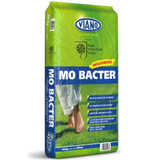Dahlia
 Dahlias should not be planted until all danger of frost has passed, and the soil temperature reaches 58-60 degrees F. Excessively wet soil may cause the tubers to rot, so if there are weather has been wet and stormy, you may want to wait. We find it best to start them indoor in 5” pots and then plant out in late May when all danger of frost is gone.
Dahlias should not be planted until all danger of frost has passed, and the soil temperature reaches 58-60 degrees F. Excessively wet soil may cause the tubers to rot, so if there are weather has been wet and stormy, you may want to wait. We find it best to start them indoor in 5” pots and then plant out in late May when all danger of frost is gone.
Dig and prepare a 12 inch diameter by 12 inch deep planting hole. Mix a shovel full of compost, a handful of bone meal, and a little Dolomite lime to the soil which was removed.
Fill the planting hole with the soil mixture until it is about six inches deep. Then place the tuber horizontally in the bottom of the hole with the eye pointing upward. Tall varieties will need staking, so this is a good time to set an appropriate size stake into the ground next to the tuber (near the eye). This will prevent damage which can result if it is added after the tuber has begun to grow.
Cover the tuber with about two inches of your soil mixture and water thoroughly. When the sprout begins to emerge from the soil, gradually add more soil mix until the hole is entirely filled. Once the plant attains sufficient height, secure it loosely to the stake. A Dahlia in bloom is a heavy feeder, so you should feed with liquid feed all summer to ensure a good crop of flowers.
Gladioli

All gladioli like rich, free-draining soil in a sunny, sheltered position, such as the foot of a south-facing wall. Plant in clumps of five to seven corms, 10cm (4in) deep and 10cm (4in) apart, during March and April.
Mark the planting position with a small cane that can be replaced with a stake as required. Lighten heavy clay soils with well-rotted manure or compost.
Plant each corm on a layer of sand to improve drainage. The taller varieties including our Cut Flower Collection will need to be staked.









